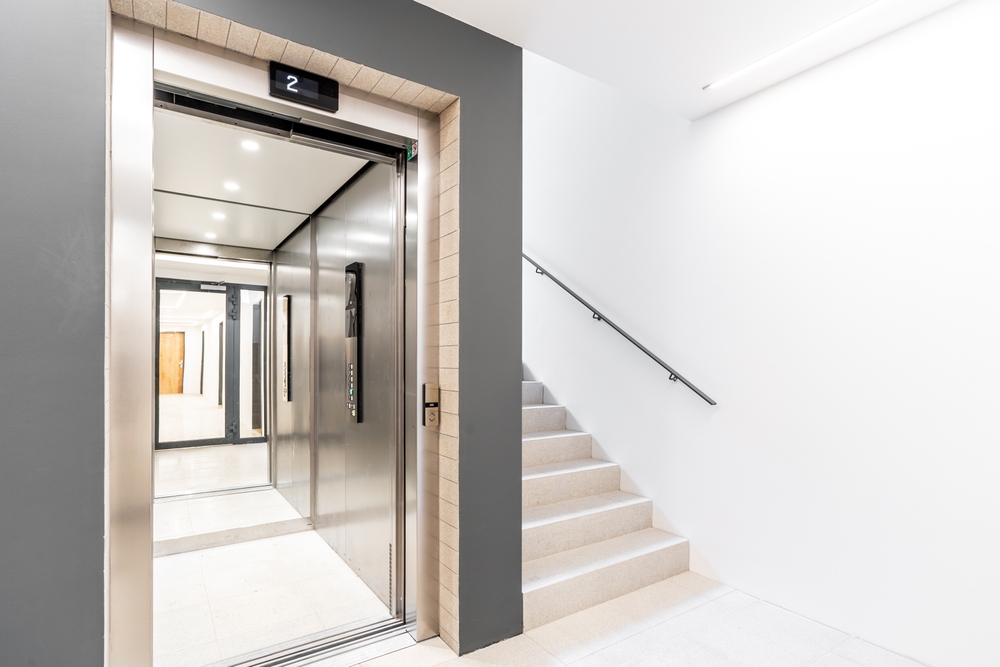
2024.12.10
Glossary
Below you will find definitions of terms that you may encounter as an elevator owner.
Call button:
Push button outside the elevator car at the landing level, which calls the car to the landing level in question.
Call board:
Board with call buttons.
Rupture disc:
Rotating wheels that carry ropes or chains.
Breaker room:
Room containing breakaway discs and any speed limiter and associated equipment.
Buffer:
Device in the form of a hydraulic cylinder, spring or similar that dampens shocks in the shaft bottom or shaft roof.
Operation and maintenance instructions:
The elevator documentation to be provided by the elevator supplier or maintenance company according to BFS 2011:12 as amended.
Door contact:
Safety contact that breaks the safety circuit when the shaft door is opened.
Post-setting:
Automatic adjustment of the plane setting when, for example, loading and unloading.
Photocell:
Sensor that detects whether a person or object is within the movement range, usually only at knee height.
Catching device:
Mechanical device that brakes and holds the basket or counterweight in place if the downward speed is too high or if the lifting device breaks or has slack.
Speed controller:
Mechanical device that activates the arresting device when the basket or counterweight reaches too high a downward or upward speed.
Elevator shaft:
Space for one or more elevator cars or platforms and any counterweight. The elevator shaft is limited by the shaft floor, shaft walls, or shaft ceiling.
Elevator car:
Load-bearing body for an elevator consisting of a supporting frame, floor, walls, ceiling and usually a car door.
Journal (Service Book):
List of all measures for supervision, care and maintenance. To be updated by the maintenance company and available at the lift. Requirements according to BFS 2011:12 as amended, Chapter 4, §2.
Car door:
Door in elevator car.
Light curtains (full coverage):
More photocells in a row to protect the ”entire” door opening.
Lifting device:
Rope, rack, chain, screw or hydraulic cylinder that carries the basket and any counterweight.
Locking path:
Mechanism on the elevator car that opens the shaft door lock.
Engine room:
Room in which the elevator machine and associated equipment are located.
Machine room:
Space for the elevator machine that does not constitute a separate room, e.g. on the car roof.
Carrier:
Mechanism on the car door that allows the shaft door and car door to open simultaneously.
Emergency button:
Push button in basket to call for help in an emergency situation (with or without communication with alarm center).
Emergency phone:
System for two-way communication to a constantly manned alarm center.
Plan setting:
A measure of how precisely the elevator stays level with the floor outside the elevator.
Rescue space:
Space to protect against crushing of a person who is in the shaft pit or on the elevator car roof when the car is in its lowest or highest position, respectively.
Shaft door:
Door in a shaft wall at the landing.
Shaft door lock:
Lock that automatically locks and unlocks the shaft door.
Shaft pit:
Part of the elevator shaft from the lowest landing level to the bottom of the shaft.
Shaft top:
Part of the elevator shaft from the top landing to the shaft roof.
Side lift:
Linear elevator with machine room next to the elevator shaft.
Sliding doors:
Automatic shaft or cage doors that open by sliding the door leaves to the side.
Swing doors:
Hinged shaft door that opens outwards on the landing level.
Stop plan:
Horizontal plane, usually a floor level, at which a car or platform should normally stop.
Steering shoe and lining:
Equipment that guides the elevator car along the guideway.
Top lift:
Linear elevator with machine room immediately above the elevator shaft.
Uninterruptible Power Supply (UPS):
System that enables the elevator to travel to the next landing in the event of a power outage.
Floor display:
A sign inside the car or at the landing that shows which floor the elevator is on.
Re-feed to the power grid:
System for feeding braking energy generated by the elevator back to the power grid.
